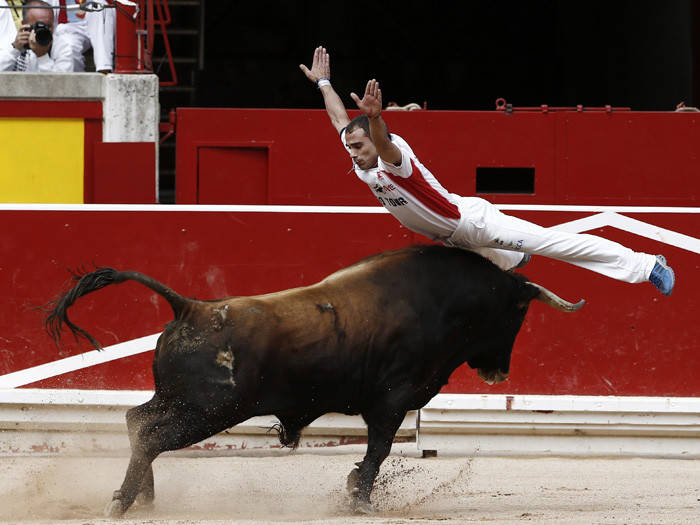The Art of Bull-Leaping
Thursday, February 10, 2022

Whether for it or against it, everyone knows about bullfighting. But how many people have heard of bull-leaping—bullfighting’s more likeable and entertaining cousin?
Bull leaping, or 'recorte', is the art of confronting a bull without any weapon besides your own agility and wit. In it, "recortadores"—the bull-leaping equivalent of the matador—simply evade the bull by turning their waists, side-stepping, or leaping over the bull, yes, literally leaping over the bull. Like dodge ball but with a bull, not a ball!
This short video on bull leaping, produced by Great Big Story, takes you into the world of Jose Manuel Medina, a Recortador. Along with countless other people in Spain, Medina dedicates his life to facing bulls in the ring with nothing to defend himself, and no intention of harming the animal.
“Everyone knows that a bull can kill you,” Medina says “but I don’t see it that way. I think it’s the opposite. The bull gives me life.” As he turns seconds before the bull pierces him with its horns, and performs acrobatic leaps over the massive animal, it is easy to understand this contradiction.
Several animal rights groups that oppose bullfights support bull leaping, with the argument that this tradition causes no physical harm to the animal. Others believe that the emotional stress that the animal endures is cruel and that this practice—along with similar ones like American rodeo—should be banned. Personally, I don't see anything wrong with this practice, it's not much different to any sport that involves animals, such as horses. These bulls are wild and never trained to do anything, they just use their instinct to go after the 'recortador'.
What do you think?
 2
Like
Published at 9:36 PM Comments (1)
2
Like
Published at 9:36 PM Comments (1)